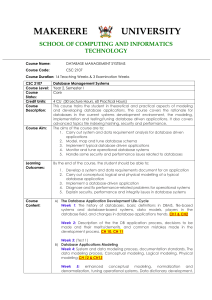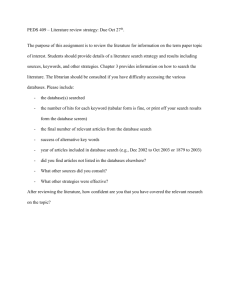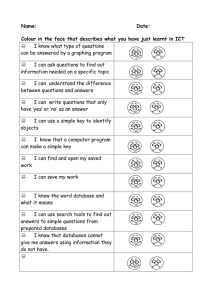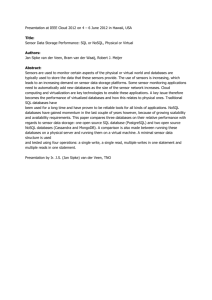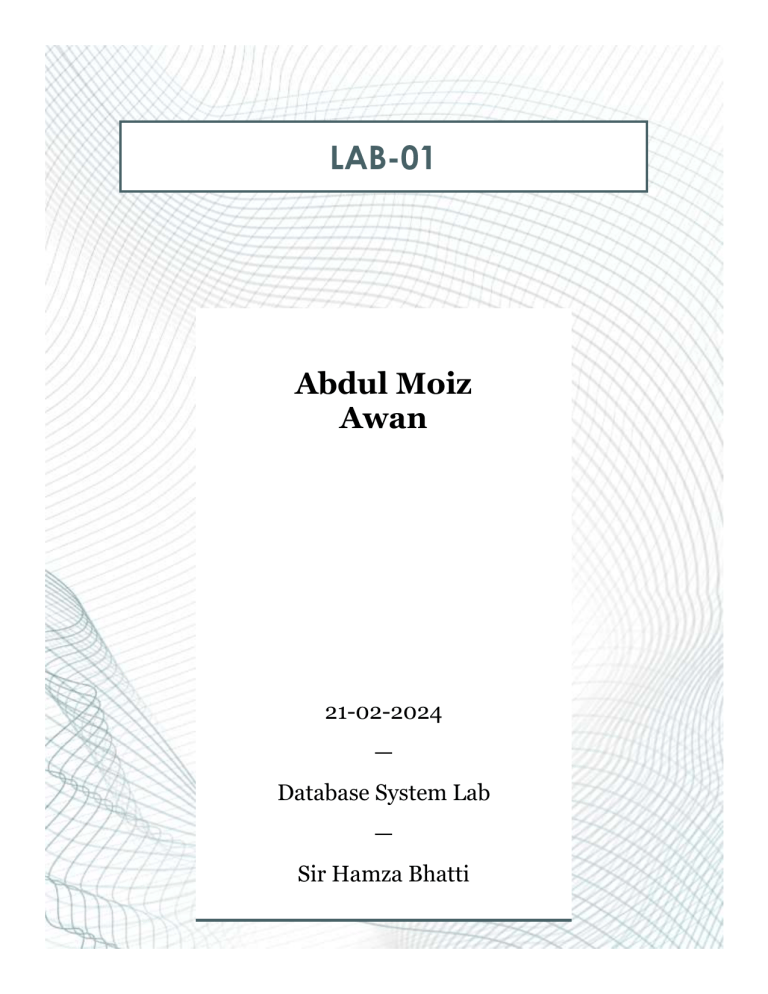
LAB-01 Abdul Moiz Awan 21-02-2024 — Database System Lab — Sir Hamza Bhatti Database: A database is an organized collection of structured information or data. Types of Databases: There are two basic types which are: 1. SQL 2. NoSQL SQL: It is a structure query language and is used for processing information in relational databases. In SQL the data is in tabular form. SQL Databases: 1. Microsoft SQL Server: 2. Oracle: It is one of the best SQL databases which helps to manage data and prevent security breaches. 3. MySQL NoSQL: NoSQL normally collects unstructured data. It uses a variety of data models for accessing and managing data. They are not in tabular form instead they are horizontally scalable. NoSQL Databases: 1. MongoDB 2. Redis (Faster than MongoDB) 3. Cassendra Relational Databases: It is a type of database that stores and provides access to data points that are related to one another. Non-Relational Databases: It is a type of database that doesn’t use the tabular schema of rows and columns. PAGE 2 ACID: It refers to four key properties: A Atomicity: Entire Transaction takes place at once or doesn’t happen at all. C Consistency: Database must be consistent before and after the transaction. I Isolation: Multiple transaction occurs independently without any interference. D Durability: A successful transaction can still take place despite a system failure. Transaction: It is a sequence of one or more operations, such as insertions, updates, or deletions, performed on a database as a single unit of work. PAGE 3


